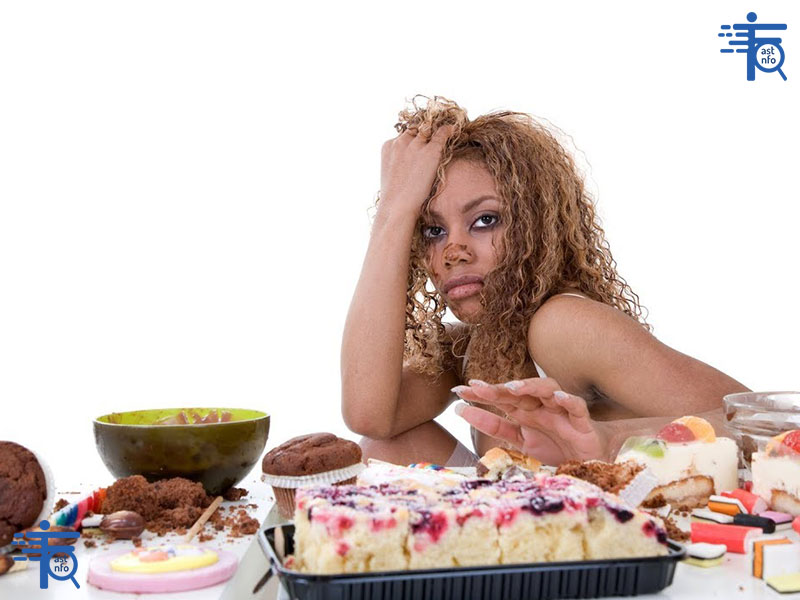Emotional Eating: What You Should Know
Emotional eating is a common behavior where people use food to cope with emotions rather than to satisfy physical hunger. While it can provide temporary comfort, it often leads to guilt, weight gain, and a cycle of unhealthy eating habits. Here’s what you need to know about emotional eating and how to manage it:
What Is Emotional Eating?
Emotional eating involves consuming food in response to feelings like stress, sadness, boredom, loneliness, or even happiness. Unlike physical hunger, which develops gradually, emotional hunger comes on suddenly and often leads to cravings for specific comfort foods (e.g., sweets, salty snacks).
Signs of Emotional Eating
- Sudden Hunger: Craving food even after eating a meal.
- Specific Cravings: Wanting comfort foods like ice cream, chips, or chocolate.
- Mindless Eating: Eating without paying attention to portion sizes or enjoying the food.
- Guilt or Shame: Feeling regret after eating, especially if you’re not physically hungry.
- Eating to Cope: Turning to food during times of stress, sadness, or boredom.
Why Do People Emotionally Eat?
- Stress: High stress levels increase cortisol, a hormone that can trigger cravings for high-calorie foods.
- Emotional Comfort: Food can temporarily soothe negative emotions or provide a sense of control.
- Habit: Over time, eating in response to emotions can become an automatic behavior.
- Social and Cultural Factors: Celebrations, gatherings, or cultural traditions often revolve around food.
- Lack of Coping Skills: Without healthy ways to manage emotions, food becomes a default coping mechanism.
How to Manage Emotional Eating
- Identify Triggers:
- Keep a food and mood journal to track what you eat, when you eat, and how you’re feeling. This can help you identify patterns and emotional triggers.
- Practice Mindful Eating:
- Pay attention to hunger and fullness cues. Eat slowly, savor each bite, and avoid distractions like TV or phones.
- Find Alternative Coping Mechanisms:
- Replace emotional eating with healthier ways to manage emotions, such as:
- Exercise (e.g., walking, yoga, dancing).
- Journaling or writing down your thoughts.
- Talking to a friend or therapist.
- Engaging in a hobby (e.g., painting, gardening, reading).
- Replace emotional eating with healthier ways to manage emotions, such as:
- Build a Support System:
- Share your struggles with trusted friends, family, or a support group. Sometimes, just talking about your feelings can help.
- Create a Healthy Environment:
- Stock your kitchen with nutritious foods and limit access to unhealthy snacks. Out of sight, out of mind!
- Plan Ahead:
- Prepare healthy meals and snacks in advance to avoid impulsive eating.
- Practice Self-Compassion:
- Be kind to yourself if you slip up. Emotional eating is a common struggle, and progress takes time.
- Address Underlying Issues:
- If emotional eating is linked to deeper emotional or psychological issues, consider seeking help from a therapist or counselor.
When to Seek Professional Help
If emotional eating feels out of control or is affecting your physical or mental health, consider reaching out to:
- A therapist or counselor to address emotional triggers.
- A registered dietitian to create a balanced eating plan.
- A support group for individuals struggling with emotional eating.
Final Thoughts
Emotional eating is a common response to stress and emotions, but it doesn’t have to control your life. By identifying triggers, developing healthier coping mechanisms, and practicing self-compassion, you can break the cycle and build a healthier relationship with food. Remember, it’s not about perfection—it’s about progress!

What causes someone to eat because of their emotions?
Emotional eating is a complex behavior influenced by a combination of psychological, physiological, and environmental factors. Here are the most common causes of emotional eating:
1. Stress
- Why: Stress triggers the release of cortisol, a hormone that increases appetite and cravings for high-calorie, sugary, or fatty foods.
- Example: After a tough day at work, you might reach for a bag of chips or a chocolate bar to feel better.
2. Negative Emotions
- Why: Feelings like sadness, loneliness, anger, or frustration can lead to emotional eating as a way to self-soothe or distract from discomfort.
- Example: Eating ice cream after a breakup to cope with feelings of heartbreak.
3. Boredom
- Why: When you’re not engaged in meaningful activities, eating can become a way to pass the time or add excitement to your day.
- Example: Snacking on cookies while watching TV, even when you’re not hungry.
4. Habit
- Why: Over time, eating in response to emotions can become an automatic behavior. For example, if you always eat popcorn at the movies, you might crave it even when you’re not hungry.
- Example: Grabbing a candy bar at the checkout line out of habit, not hunger.
5. Social and Cultural Influences
- Why: Food is often tied to social gatherings, celebrations, and cultural traditions, which can lead to eating for emotional reasons rather than hunger.
- Example: Eating cake at a birthday party even if you’re full, because it’s part of the celebration.
6. Childhood Conditioning
- Why: If food was used as a reward or comfort during childhood (e.g., getting ice cream after a good grade), you may continue this pattern as an adult.
- Example: Eating sweets to reward yourself for completing a task.
7. Lack of Coping Skills
- Why: If you haven’t developed healthy ways to manage emotions, food can become a default coping mechanism.
- Example: Turning to pizza after an argument because you don’t know how to process your feelings.
8. Hormonal Imbalances
- Why: Hormonal changes, such as those during menstruation, pregnancy, or menopause, can increase cravings and emotional eating.
- Example: Craving chocolate or salty snacks during PMS.
9. Sleep Deprivation
- Why: Poor sleep disrupts hormones that regulate hunger (ghrelin and leptin), leading to increased appetite and cravings.
- Example: Overeating or craving junk food after a sleepless night.
10. Dieting or Restrictive Eating
- Why: Strict diets or skipping meals can lead to intense hunger and cravings, making you more likely to overeat or turn to comfort foods.
- Example: Binging on cookies after a day of restrictive eating.
11. Mental Health Conditions
- Why: Conditions like depression, anxiety, or binge eating disorder (BED) can increase the likelihood of emotional eating.
- Example: Overeating as a way to numb feelings of sadness or anxiety.
12. Environmental Triggers
- Why: Certain environments or situations can trigger emotional eating, such as being around tempting foods or feeling pressured to eat.
- Example: Eating more at a party because everyone else is indulging.

How to Address the Root Causes
- Identify Triggers: Keep a journal to track when and why you emotionally eat.
- Develop Healthy Coping Mechanisms: Replace emotional eating with activities like exercise, journaling, or talking to a friend.
- Practice Mindful Eating: Pay attention to hunger and fullness cues, and eat without distractions.
- Seek Support: Talk to a therapist, counselor, or support group to address underlying emotional issues.
- Create a Balanced Routine: Prioritize sleep, manage stress, and eat regular, nutritious meals to reduce cravings.
When to Seek Professional Help
If emotional eating feels out of control or is affecting your physical or mental health, consider reaching out to:
- A therapist to address emotional triggers.
- A registered dietitian to create a balanced eating plan.
- A support group for individuals struggling with emotional eating.
By understanding the root causes of emotional eating and developing healthier coping strategies, you can break the cycle and build a more positive relationship with food.
Is emotional eating an eating disorder?
Emotional eating itself is not classified as an eating disorder, but it can be a symptom or contributing factor to disordered eating patterns. Whether emotional eating becomes problematic depends on its frequency, intensity, and impact on your physical and mental health. Here’s a breakdown of how emotional eating relates to eating disorders:
Emotional Eating vs. Eating Disorders
- Emotional Eating:
- Definition: Eating in response to emotions (e.g., stress, sadness, boredom) rather than physical hunger.
- Characteristics: Occasional overeating or craving comfort foods during emotional moments.
- Impact: While it can lead to guilt or weight gain, it doesn’t necessarily disrupt daily functioning or cause severe health issues.
- Eating Disorders:
- Definition: Mental health conditions characterized by severe disturbances in eating behaviors and related thoughts and emotions.
- Characteristics: Extreme preoccupation with food, weight, and body image, often accompanied by harmful behaviors like restriction, bingeing, or purging.
- Impact: Can lead to serious physical and psychological consequences, including malnutrition, organ damage, and depression.
When Emotional Eating Becomes Problematic
Emotional eating may cross into disordered eating territory if:
- It happens frequently and feels out of control.
- It leads to binge eating episodes (consuming large amounts of food in a short time).
- It causes significant distress, guilt, or shame.
- It interferes with daily life, relationships, or health.
- It becomes a primary coping mechanism for managing emotions.

Types of Eating Disorders Linked to Emotional Eating
- Binge Eating Disorder (BED):
- Description: Recurrent episodes of eating large amounts of food quickly, often in response to emotions, accompanied by a sense of loss of control.
- Connection to Emotional Eating: Emotional eating can escalate into binge eating if it becomes a frequent and uncontrollable behavior.
- Bulimia Nervosa:
- Description: Cycles of binge eating followed by compensatory behaviors like vomiting, excessive exercise, or fasting.
- Connection to Emotional Eating: Emotional eating may trigger binge episodes, which are then followed by purging.
- Other Specified Feeding or Eating Disorders (OSFED):
- Description: Disordered eating behaviors that don’t meet the full criteria for other eating disorders but still cause significant distress or impairment.
- Connection to Emotional Eating: Emotional eating may be a component of these behaviors.
Signs That Emotional Eating May Be a Disorder
If you experience any of the following, it may indicate a more serious issue:
- Frequent episodes of overeating or bingeing.
- Feeling unable to stop eating, even when full.
- Hiding or hoarding food.
- Extreme guilt, shame, or disgust after eating.
- Using food as the primary way to cope with emotions.
- Significant weight fluctuations or preoccupation with weight and body image.
How to Address Emotional Eating
- Practice Mindful Eating:
- Pay attention to hunger and fullness cues, and eat without distractions.
- Identify Triggers:
- Keep a journal to track when and why you emotionally eat.
- Develop Healthy Coping Mechanisms:
- Replace emotional eating with activities like exercise, journaling, or talking to a friend.
- Seek Professional Help:
- If emotional eating feels out of control, consider reaching out to a therapist, counselor, or registered dietitian.
When to Seek Help for an Eating Disorder
If emotional eating escalates into disordered eating behaviors, seek help from:
- A therapist or counselor specializing in eating disorders.
- A registered dietitian to create a balanced eating plan.
- A support group for individuals struggling with eating disorders.
Final Thoughts
While emotional eating is not an eating disorder on its own, it can contribute to or coexist with disordered eating patterns. By addressing the root causes and developing healthier coping strategies, you can prevent emotional eating from becoming a more serious issue. If you’re concerned about your eating behaviors, don’t hesitate to seek professional support.
Emotional hunger vs. physical hunger
Understanding the difference between emotional hunger and physical hunger is key to developing a healthier relationship with food and avoiding overeating. Here’s a breakdown of how to distinguish between the two:
Emotional Hunger
Emotional hunger is driven by feelings rather than a true need for nourishment. It often arises suddenly and is tied to specific cravings or emotional triggers.
Characteristics of Emotional Hunger:
- Comes on Suddenly:
- You feel hungry all at once, even if you’ve recently eaten.
- Craves Specific Foods:
- You want comfort foods like pizza, ice cream, or chips, rather than a balanced meal.
- Feels Urgent:
- You feel like you need to eat right away, often leading to impulsive decisions.
- Not Satisfied by Fullness:
- You keep eating even when you’re physically full, often until you’re uncomfortably stuffed.
- Tied to Emotions:
- You eat in response to feelings like stress, sadness, boredom, loneliness, or even happiness.
- Leads to Guilt or Shame:
- After eating, you may feel regret, guilt, or disappointment in yourself.
Physical Hunger
Physical hunger is your body’s natural way of signaling that it needs energy and nutrients. It develops gradually and can be satisfied by a variety of foods.
Characteristics of Physical Hunger:
- Comes on Gradually:
- You feel hunger cues like a growling stomach, low energy, or lightheadedness over time.
- Open to Different Foods:
- You’re willing to eat a variety of foods, including healthy options like vegetables, proteins, and grains.
- Feels Manageable:
- You can wait to eat and make thoughtful food choices.
- Stops When Full:
- You feel satisfied and stop eating when your body has had enough.
- Tied to Physical Needs:
- You eat because your body needs fuel, not because of emotional triggers.
- No Negative Feelings:
- After eating, you feel nourished and energized, without guilt or shame.

How to Tell the Difference
Ask yourself these questions when you feel hungry:
- Did my hunger come on suddenly or gradually?
- Sudden hunger is often emotional; gradual hunger is physical.
- Am I craving a specific food, or am I open to different options?
- Cravings for comfort foods suggest emotional hunger.
- Am I eating because I’m stressed, bored, or sad?
- If yes, it’s likely emotional hunger.
- Would a healthy snack satisfy me, or do I only want junk food?
- Only wanting junk food points to emotional hunger.
- Am I eating past the point of fullness?
- Overeating is a sign of emotional hunger.
How to Manage Emotional Hunger
- Pause and Reflect:
- Before eating, take a moment to ask yourself if you’re truly hungry or just responding to emotions.
- Find Alternative Coping Mechanisms:
- Replace emotional eating with healthier ways to manage emotions, such as:
- Going for a walk.
- Practicing deep breathing or meditation.
- Journaling or talking to a friend.
- Replace emotional eating with healthier ways to manage emotions, such as:
- Practice Mindful Eating:
- Eat slowly, savor each bite, and pay attention to how your body feels.
- Create a Support System:
- Share your struggles with someone you trust or seek professional help if needed.
- Stock Healthy Options:
- Keep nutritious snacks on hand to satisfy physical hunger without overindulging.
How to Honor Physical Hunger
- Eat Regularly:
- Don’t skip meals, as this can lead to intense hunger and overeating later.
- Choose Nutrient-Dense Foods:
- Focus on whole, unprocessed foods that provide sustained energy.
- Listen to Your Body:
- Stop eating when you feel satisfied, not stuffed.
- Stay Hydrated:
- Sometimes thirst is mistaken for hunger, so drink water throughout the day.
How to stop emotional eating
Stopping emotional eating requires a combination of self-awareness, healthy coping mechanisms, and lifestyle changes. Here’s a step-by-step guide to help you break the cycle of emotional eating and build a healthier relationship with food:
1. Identify Your Triggers
- Keep a Journal: Write down what you eat, when you eat, and how you’re feeling at the time. Look for patterns (e.g., stress, boredom, loneliness).
- Ask Yourself:
- Am I truly hungry, or am I eating to cope with emotions?
- What emotions am I feeling right now?
2. Practice Mindful Eating
- Slow Down: Eat slowly and savor each bite. Pay attention to the taste, texture, and smell of your food.
- Eliminate Distractions: Avoid eating in front of the TV, computer, or phone. Focus on your meal.
- Check In: Pause halfway through your meal to assess your hunger and fullness levels.
3. Develop Healthy Coping Mechanisms
Replace emotional eating with alternative ways to manage emotions:
- Physical Activity: Go for a walk, do yoga, or dance to release stress and boost mood.
- Creative Outlets: Try journaling, painting, or playing music to express your feelings.
- Relaxation Techniques: Practice deep breathing, meditation, or progressive muscle relaxation.
- Social Support: Call a friend, join a support group, or talk to a therapist.
4. Create a Supportive Environment
- Stock Healthy Foods: Keep nutritious snacks like fruits, veggies, nuts, and yogurt on hand.
- Limit Temptations: Avoid keeping comfort foods like chips, cookies, or ice cream in the house.
- Plan Ahead: Prepare healthy meals and snacks in advance to avoid impulsive eating.
5. Address Underlying Emotions
- Acknowledge Your Feelings: Instead of suppressing emotions, allow yourself to feel them. Write them down or talk to someone you trust.
- Seek Professional Help: If emotional eating is linked to deeper issues like anxiety, depression, or trauma, consider therapy or counseling.
6. Build a Balanced Routine
- Eat Regularly: Don’t skip meals, as this can lead to intense hunger and overeating later.
- Stay Hydrated: Drink water throughout the day, as thirst can sometimes be mistaken for hunger.
- Prioritize Sleep: Aim for 7-9 hours of sleep per night, as poor sleep can disrupt hunger hormones and increase cravings.
7. Practice Self-Compassion
- Be Kind to Yourself: If you slip up, don’t beat yourself up. Emotional eating is a common struggle, and progress takes time.
- Celebrate Small Wins: Acknowledge and reward yourself for making healthier choices.
8. Use the HALT Technique
When you feel the urge to eat, ask yourself:
- Hungry: Am I physically hungry?
- Angry: Am I feeling upset or frustrated?
- Lonely: Am I seeking comfort or connection?
- Tired: Am I fatigued or in need of rest?
This can help you identify the real need behind the craving.
9. Set Realistic Goals
- Start Small: Focus on making one or two changes at a time, like drinking more water or adding a daily walk.
- Track Progress: Use a journal or app to monitor your eating habits and emotional triggers.
10. Seek Professional Help if Needed
If emotional eating feels out of control or is affecting your physical or mental health, consider reaching out to:
- A therapist or counselor to address emotional triggers.
- A registered dietitian to create a balanced eating plan.
- A support group for individuals struggling with emotional eating.

Sample Action Plan
- Morning: Start your day with a healthy breakfast and a few minutes of mindfulness or journaling.
- Midday: Take a short walk or practice deep breathing during lunch to manage stress.
- Evening: Prepare a balanced dinner and enjoy it without distractions. After dinner, engage in a relaxing activity like reading or taking a bath.
- Snacks: Keep healthy options like cut-up veggies, fruit, or nuts on hand for when cravings strike.
fastinfosearch site provides the best information
Suggested content:
The Best Yeast Infection Pills, Creams, and Treatment Options





No comment